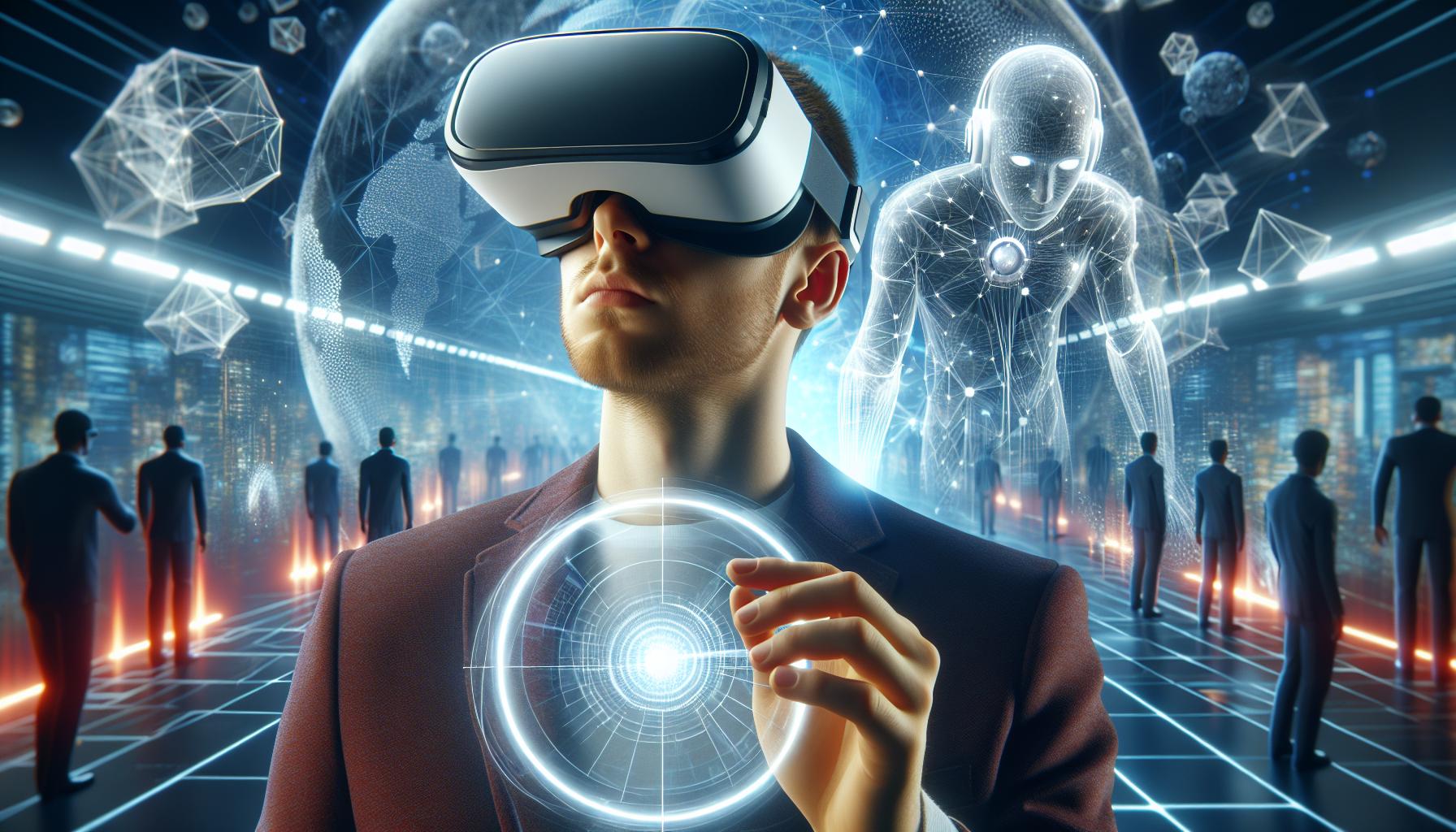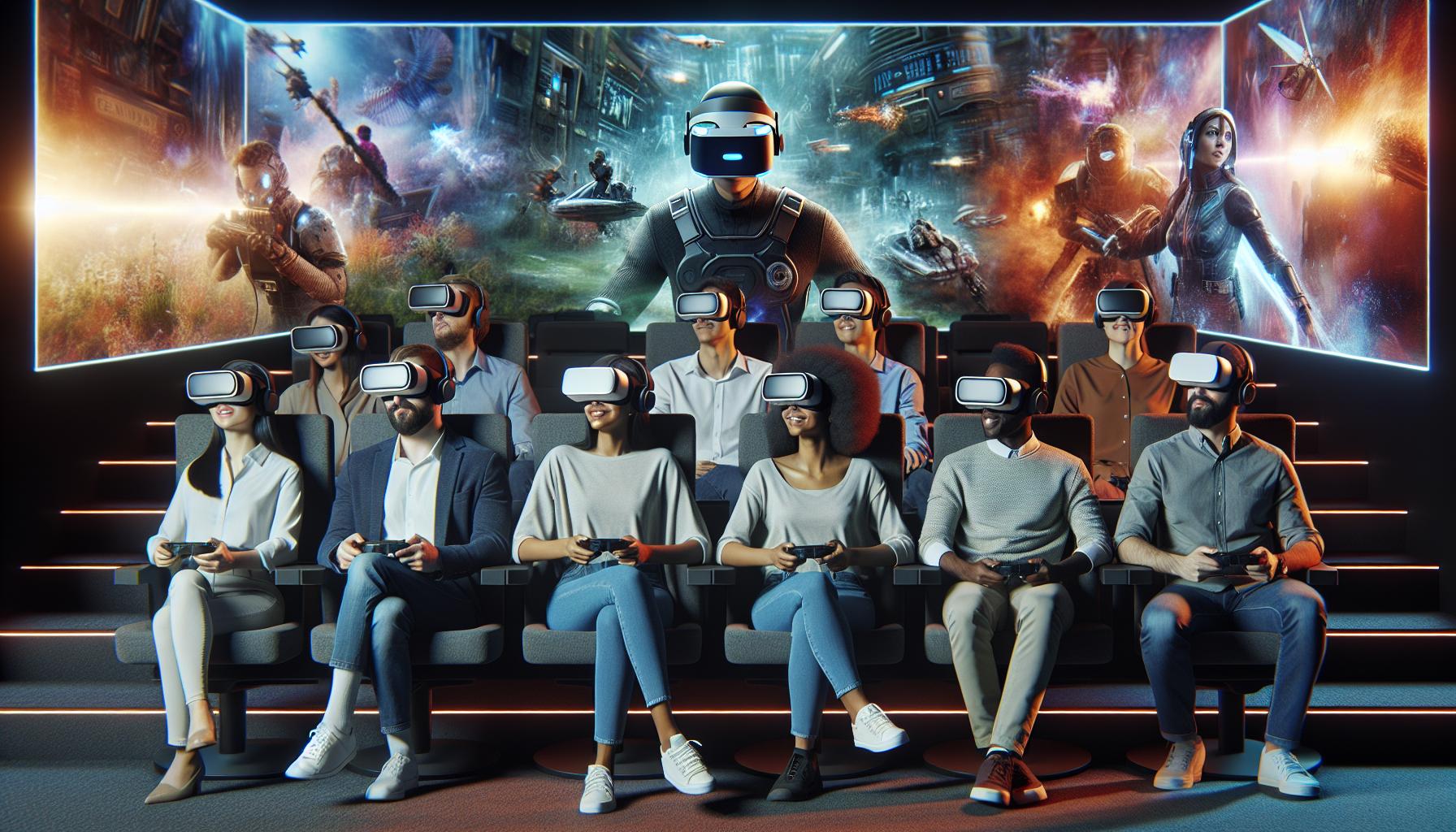Key Takeaways
- Immersive Experiences: Virtual reality movies provide a 360-degree perspective, allowing viewers to actively engage within the storyline and surroundings.
- Emotional Engagement: Techniques used in VR filmmaking evoke strong emotional responses, deepening connections between audiences and characters.
- Innovative Storytelling: Unlike traditional films, VR narratives often employ non-linear storytelling and allow viewers to influence plot outcomes through their interactions.
- Technological Advances: Improvements in VR technology enhance visual quality and accessibility, drawing more audiences and encouraging creative experimentation among filmmakers.
- Diverse Genres: VR movies span multiple genres, including horror, documentary, adventure, science fiction, and romance, catering to various audience interests.
- Future Potential: The future of virtual reality movies is promising, with opportunities for enhanced realism, collaborative experiences, and broader audience accessibility, though challenges like high production costs and user comfort remain.
Virtual reality movies are revolutionizing the way audiences experience storytelling. Gone are the days when viewers simply watched from a distance; now they find themselves immersed in vibrant worlds where they can interact with characters and environments. This innovative medium blends film with gaming, creating a unique form of entertainment that captivates the imagination.
As technology advances, the potential for virtual reality films continues to expand. Filmmakers are exploring new techniques to engage viewers on a deeper level, making it possible to feel every emotion and sensation as if they were part of the narrative. With the rise of VR headsets and platforms, this genre is poised to become a staple in modern cinema, inviting everyone to step inside the story and experience it like never before.
Virtual Reality Movies
Virtual reality movies represent a significant evolution in cinematic storytelling. They transport viewers into immersive, interactive environments where participation enhances the narrative. By leveraging advanced technology, filmmakers create experiences that captivate and engage, allowing audiences to explore storylines from unique perspectives.
Key elements of virtual reality movies include:
- Immersive Experiences: VR movies provide a 360-degree view, enabling viewers to look around and interact within the scene. This engagement transforms passive watching into active participation.
- Emotional Engagement: Filmmakers use techniques designed to evoke deep emotional responses. By placing audiences in the characters’ shoes, they create powerful connections to the storyline.
- Innovative Storytelling: Unlike traditional films, VR movies employ non-linear storytelling methods. Viewers can influence certain aspects of the plot, leading to diverse outcomes based on their interactions.
- Access to Technology: The rise in VR headset availability and platforms facilitates the widespread consumption of VR content. This accessibility encourages more filmmakers to experiment with the medium.
- Future Prospects: As technology continues to advance, virtual reality movies promise to redefine cinematic experiences. Innovations in graphics and interactivity are likely to expand creative opportunities for storytellers.
Understanding these core components highlights the transformative power of virtual reality movies in modern cinema.
Emerging Trends In Virtual Reality Movies

Innovations in virtual reality movies are shaping the future of storytelling through interactive elements and advanced technologies. These trends are redefining audience engagement and enhancing narrative experiences.
Interactive Storytelling
Interactive storytelling enables viewers to influence plot directions in real-time. Filmmakers use branching narratives, where choices affect outcomes, allowing audiences to immerse themselves fully in the story. For example, projects like “The Invisible Hours” create unique experiences by giving participants the power to explore different viewpoints. This form of storytelling fosters emotional investment, resulting in a deeper connection to characters and plotlines. As interactivity grows, creators are incorporating gameplay mechanics, blending cinema and gaming to elevate viewer participation.
Technological Advances
Technological advances enhance the quality and accessibility of virtual reality movies. High-resolution displays and sophisticated graphics engines deliver stunning visuals, while spatial audio technology immerses viewers in soundscapes that react to their movements. The development of haptic feedback devices adds a tactile layer, allowing viewers to feel interactions within the virtual world. Additionally, the proliferation of affordable VR headsets such as Meta Quest and PlayStation VR encourages wider audience participation. These advancements support the creation of more intricate narratives, making virtual reality a potent storytelling medium.
Popular Virtual Reality Movies

Virtual reality movies have gained traction, drawing attention for their immersive storytelling. This section highlights notable titles and explores various genres within the VR movie landscape.
Notable Titles
- The Invisible Hours: This interactive mystery allows viewers to explore the perspectives of various characters in a single narrative, creating a tapestry of interconnected stories.
- Wanderer: This time-traveling adventure lets users experience pivotal historical events while solving puzzles, showcasing how gameplay mechanics enhance immersion.
- The Walking Dead: Saints & Sinners: Based on the popular series, this horror title emphasizes survival in a zombie-infested world, integrating choice-driven gameplay.
- Traveling While Black: This documentary film offers an emotional experience that highlights the challenges faced by African Americans during their travels, blending historical narratives with interactivity.
- Otherland: This narrative-driven VR adaptation of Tad Williams’ novel allows users to explore vast virtual realms, combining storytelling with rich world-building.
- Horror: VR horror movies immerse viewers in terrifying environments, such as “The Walking Dead: Saints & Sinners,” creating high-stakes scenarios through player choices.
- Documentary: Films like “Traveling While Black” blend storytelling with factual narratives, allowing viewers to engage with real-world issues from a personal perspective.
- Adventure: Titles like “Wanderer” invite users to partake in expansive journeys, integrating puzzles and interactive elements to enhance engagement.
- Science Fiction: VR sci-fi films explore futuristic themes, often utilizing speculative technologies, like “Lone Echo,” which combines exploration with unique gameplay mechanics.
- Romance: These experiences, such as “Miyubi,” allow users to engage in emotional narratives that foster connections with characters, emphasizing storytelling over traditional plot structures.
The Future Of Virtual Reality Movies

The future of virtual reality (VR) movies holds immense potential for innovation and transformation in storytelling. As technology evolves, filmmakers and creators increasingly explore new avenues for immersive experiences.
Potential Developments
Potential developments in VR movies include improved realism through enhanced graphics and animation techniques. Advanced AI-driven algorithms can create dynamic characters that respond intuitively to viewer decisions, elevating interactivity and engagement. Additionally, collaborative VR platforms could enable shared experiences, allowing viewers to journey together in real-time, fostering social connections. Innovations in accessibility may extend VR cinema to wider audiences, incorporating adaptive technologies for individuals with disabilities. Future projects could also integrate augmented reality (AR) elements, enriching the VR experience by blending real-world environments with digital narratives.
Challenges Ahead
Challenges ahead for VR movies involve high production costs and technology accessibility. Creating compelling VR content demands significant investment in both hardware and software, potentially limiting opportunities for independent creators. Additionally, a lack of standardization across platforms may hinder content compatibility, affecting viewer experiences. User comfort remains a concern, as extended immersion can lead to fatigue or discomfort. Moreover, ensuring that narratives retain emotional depth while providing extensive interactivity presents a delicate balance for filmmakers. Addressing these challenges is essential for broader adoption and continued innovation in the VR movie landscape.
Emotional Connections And Interactivity
Virtual reality movies are reshaping the landscape of storytelling by creating immersive experiences that engage audiences on a deeper level. As technology evolves filmmakers are finding innovative ways to enhance emotional connections and interactivity. This shift not only transforms how stories are told but also how viewers experience them.
With advancements in graphics and sound as well as the increasing accessibility of VR headsets the future looks bright for this medium. While challenges remain the potential for collaborative and shared experiences could further enrich the VR movie landscape. Ultimately virtual reality films stand poised to redefine entertainment and storytelling in ways that were once unimaginable.
